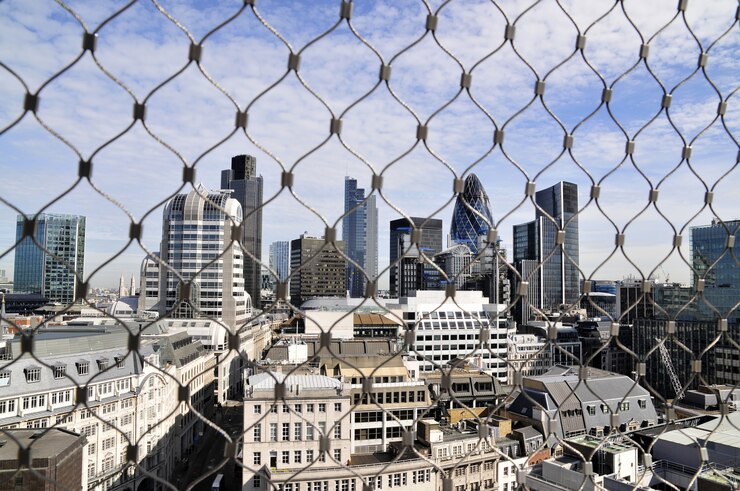In modern urban living, apartment complexes, commercial buildings, and industrial setups often feature duct areas that serve as vital channels for ventilation, drainage, and utility installations. While these ducts are essential, they also become common nesting and roosting sites for birds—particularly pigeons. Over time, this can create serious hygiene concerns, structural damage, and safety hazards.
One of the most effective solutions to this growing problem is the installation of duct area bird and pigeon nets. These nets provide a strong yet discreet barrier that prevents birds from entering, without harming them, while maintaining airflow and light. In this article, we’ll explore the importance, benefits, installation methods, and applications of duct area bird and pigeon nets.
The Problem with Birds in Duct Areas
Duct areas are usually narrow, dark, and sheltered spaces—perfect for birds like pigeons to nest and breed. However, when birds invade these areas, they create several problems:
- Health Hazards – Pigeon droppings carry bacteria, fungi, and parasites that can lead to respiratory diseases, skin allergies, and infections in humans.
- Bad Odor and Dirt – Accumulated droppings and feathers create an unpleasant smell and dirty environment.
- Clogged Drains and Ventilation – Bird nests can block ducts, leading to poor air circulation, water stagnation, or leakage.
- Structural Damage – Bird droppings are acidic and can corrode building surfaces, pipes, and ducts.
- Unwanted Noise – Continuous cooing and fluttering sounds can cause disturbance to residents and workers.
These issues highlight the urgent need for preventive measures, and duct area nets provide the most practical and long-lasting solution.
What Are Duct Area Bird & Pigeon Nets?
Bird and pigeon nets are specially designed, high-strength nylon or polyethylene nets installed across duct openings and gaps. They act as a protective shield that prevents birds from entering while still allowing free airflow and sunlight.
- Material: UV-stabilized, weather-resistant nylon or HDPE
- Mesh Size: Small enough (usually 25–40 mm) to block pigeons but not airflow
- Durability: Long-lasting, resistant to rain, dust, and sunlight
- Aesthetic: Transparent or colored options available, blending with building design
Benefits of Installing Bird & Pigeon Nets in Duct Areas
- 100% Bird Prevention – Once installed, these nets completely restrict pigeons and other birds from nesting inside duct spaces.
- Hygienic Environment – Prevents droppings, odor, and bacterial growth, ensuring a cleaner living space.
- Safe and Humane – The nets do not harm birds; they simply act as a barrier, making them an ethical solution.
- Durable and Weatherproof – High-quality nets withstand harsh weather, ensuring long-term protection.
- Low Maintenance – Once fixed, they require very little upkeep compared to constant cleaning of droppings.
- Cost-Effective – Saves money in the long run by preventing frequent cleaning, structural repairs, and pest control treatments.
- Improved Airflow – Specially designed nets allow free passage of air and sunlight, without blocking ventilation.
Installation of Duct Area Bird Nets
Professional installation ensures maximum effectiveness and safety. The process generally includes:
- Inspection – Experts survey the duct area to measure dimensions and identify entry points for birds.
- Material Selection – Suitable net type, mesh size, and color are chosen based on requirements.
- Framework Setup – Stainless steel hooks, wires, or anchors are fixed around the duct edges to hold the net firmly.
- Net Installation – The net is tightly fitted across the opening, ensuring no gaps are left.
- Testing – A final inspection ensures that the net is secure, durable, and effective.
Applications of Bird & Pigeon Nets
- Residential Apartments – Duct areas in multi-story flats are the most common targets for pigeons. Nets protect families from unhygienic surroundings.
- Commercial Buildings – Office complexes use duct nets to maintain a clean, professional environment.
- Hospitals & Schools – Hygiene-sensitive places benefit greatly from bird-proofing ducts.
- Hotels & Restaurants – Prevent contamination and foul odor from affecting guests.
- Industries & Warehouses – Duct nets prevent damage to equipment and stored goods caused by bird infestations.
Choosing the Right Bird Netting Service
When selecting a provider for duct area bird and pigeon netting, consider:
- Quality of Net Material – UV-stabilized, weatherproof, and long-lasting nets are essential.
- Experience of the Installer – Professionals ensure gap-free fitting and durable installation.
- Customization – Nets should be cut and installed according to duct size and structure.
- Warranty – Reliable companies offer warranty on material and installation.
- After-Sales Support – Quick service for any maintenance issues.
Conclusion
Birds, especially pigeons, may seem harmless, but when they invade duct areas, they bring along dirt, disease, and damage. Continuous cleaning and chemical treatments are only temporary fixes. The best long-term, eco-friendly, and cost-effective solution is the installation of duct area bird and pigeon nets.
These nets provide a safe, hygienic, and permanent barrier against bird intrusion while preserving ventilation and light. Whether in residential apartments, commercial buildings, or industrial spaces, bird netting ensures a cleaner and healthier environment for everyone.
By investing in duct area bird and pigeon nets today, property owners can save time, money, and effort while ensuring a safer and more pleasant living and working environment.

